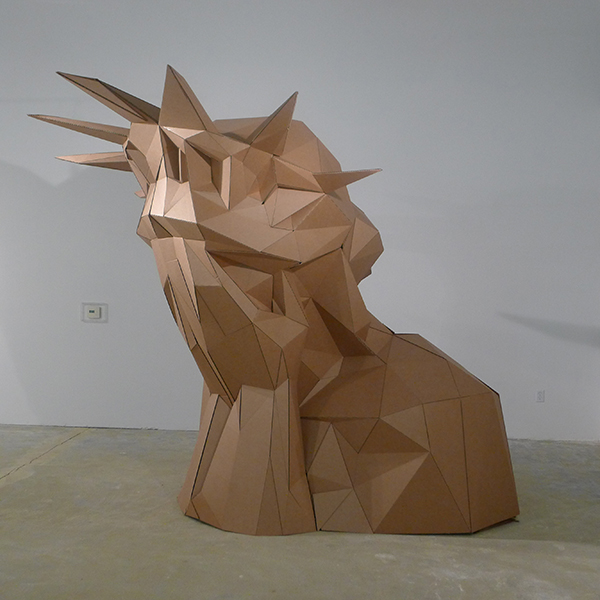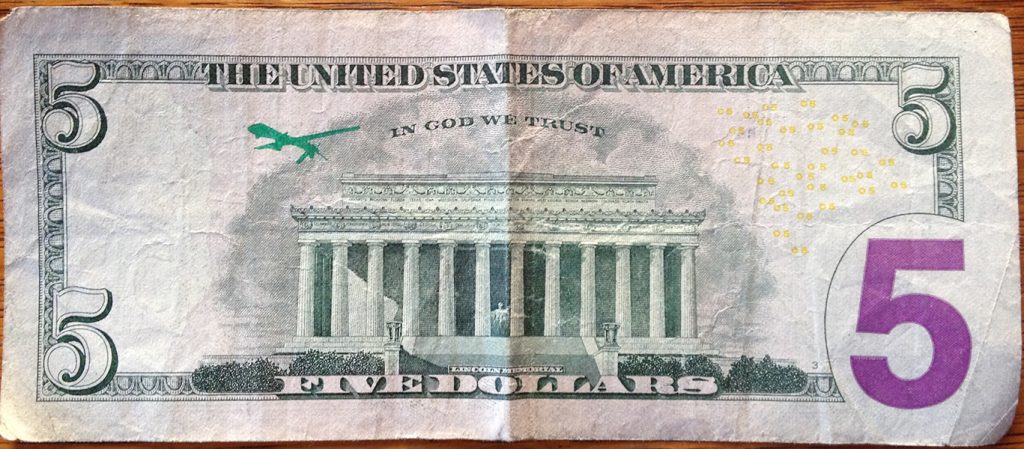
Every month we invite a different contributor to write a blog at Creative Dundee, this month it’s Media artist and activist Joseph DeLappe, who moved to Dundee this past January to take on a new role as a Professor of Gaming and Tactical Media at Abertay University. DeLappe has been deeply involved in experimental media practices, serious games, political art, social engagement, cultural critique and collaboration for much of his 27-year career as a professional artist and educator. He came to Dundee the first time in 2015 to work with an amazing group of gaming and media artists who now form the core of the Biome Collective – they worked together to create the computer game “Killbox”, a project that seeks to creatively engage drone warfare through simulation and interactivity.
2016 was a year of political earthquakes in the UK, the USA and the world. The question for us as artists, designers and so-called “creatives” is, how do we respond? I’ve been struggling with this question for the past 12 months since the election in the United States. To be totally honest until quite recently, I’ve been facing a bit of a personal crisis in confidence regarding the efficacy and seeming futility of responding as an artist to such monumental political shifts as; Brexit, the alt-right/re-emergence of fascism, the never ending “war on terror”, the surveillance state, etc… not to mention the very real uncertainty of a livable planet in the not so distant future due to the worsening global climate crisis. Take your pick, right?
Prior to the US presidential election disaster, I had several ideas for projects that seemed to become meaningless when the-orange-one-who-will-not-be-mentioned seemed to take all of the air out of the room. What to do?
Again, that question, how do we as creatives, as artist, designers and citizens choose to respond? How, in the face of so many daunting challenges facing the world, do we not descend into despair? How do we not lose hope?
“Hope locates itself in the premises that we don’t know what will happen and that in the spaciousness of uncertainty is room to act. When you recognize uncertainty, you recognize that you may be able to influence the outcomes—you alone or in concert with a few dozen or several million others” – Rebecca Solnit, Hope in the Dark: Untold Histories, Wild Possibilities, 2016
The above quote by Rebecca Solnit is from her excellent book “Hope in the Dark”. Read this book. First published in 2004 during the despair of the Bush era and the invasion of Iraq – I’m re-reading this text just now and I suspect it won’t be the last time I do this – Solnit’s book struck a nerve when it was first published and recently sold out soon after the-orange-one-who-will-not-be-mentioned took up residency in the White House (in response the election, for a time Solnit gave the text via free downloads). Solnit gives us reason for hope, framing activism and the often less apparent change that emerges over time as hopeful, doable and essential.
What are some examples of creative activism? Here are a few recent examples of inspired efforts towards critically engaging our present context.
A few weeks ago a Belgium based group of activists WAAR (We Are All Refugees), working with the US based artists/activists The Yes Men, released a hoax on the Belgian public – “RefuGreenErgy”, a faux start-up “that converts the power of bicycling refugees into electrical energy—giving the refugees 24-hour periods of amnesty and 1.60 euros per day, and Belgians “green electricity” and a “guilt-free way to help others.””
On the border between the United States and Mexico, the French street artist JR recently staged an event entitled “Giant Picnic”, a massive table with a print of the eyes of a dreamer which spanned both sides of the border, intersected by the existing border wall. Guests shared food and music. In the words of the artist, “People eating the same food, sharing the same water, enjoying the same music (half of the band on each side) around the eye of a dreamer.”
As I write this, women have taken over social media with the hashtag #metoo, started by African American activist Taran Burke, thousands of women have been filling their social media feeds, sharing often gut-wrenching descriptions of sexual harassment in their daily lives.
Or the equally viral #pussiehatproject started by by Krista Suh and Jayna Zweiman. All of these projects began with ideas and the motivation to do something critical and creative. Important to note as well that all of these efforts functioned outside of any sanctioned art spaces, galleries, museums, etc… None of these individuals waited for permission or for that matter to be asked to do these inspired works. They just did them. We must too!
The Center for Creative Activism has published this free resource online: “Why Artistic Activism?”. Therein they speak to the differences and similarities between art and activism. Check out their website as well – I hope one day to get these folks to Dundee for a workshop.
Speaking of Dundee, one of the things that attracted me to this city is the unique open and collaborative nature of the creative community that exists here. If you are an artist, a designer, or anyone with an interest in creatively affecting change – there are many ways to do something, and Dundee is the perfect place to do it.
Work together, meet, organise, strategise.
Joseph DeLappe will be giving a talk at the Dundee Arts Café entitled ‘The Art of Making Trouble’. You can also watch his Pecha Kucha talk from last May.

